Former Pope Benedict XVI failed to act over four child abuse cases when he was archbishop of Munich, a German probe into the Catholic Church has alleged.
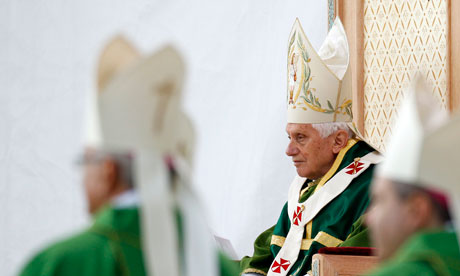
Pope Benedict, then called Josef Ratzinger, held the position from 1977 to 1982. He has denied the accusations.
But a new report into historical abuse allegations carried out by a German law firm incriminated the former pontiff.
Abuse continued under his tenure, it is alleged, and the accused priests remained active in church roles.
The former pope, now aged 94, became the first Church leader to resign in more than 600 years in 2013, citing exhaustion. Since then, he has led a largely quiet life in the Vatican City and is known as pope emeritus.
The new report from German law firm Westpfahl Spilker Wastl was commissioned by the Catholic Church.
“Two of these cases concern abuses committed during his tenure and sanctioned by the state,” lawyer Martin Pusch said as he announced the report.
“In both cases, the perpetrators remained active in pastoral care.”
In one instance, it is alleged he knew about a priest accused of abusing boys who was transferred to his diocese, but who then continued to work in pastoral care roles – this often involves visiting and supporting people within the community.
The former pope is reported to have submitted dozens of pages of answers to the law firm’s questioning, in which he expressed support for the inquiry but denied any knowledge or lack of action around the abuse allegations.
The report, however, contains minutes which strongly suggest he was present at a meeting at which the subject was discussed.
The Vatican said in a statement that it would examine the details of the report once it had been published.
“As we reiterate the sense of shame and regret for the abuses on minors by priests, the Holy See expresses its support for all victims and it confirms the path to protect minors, guaranteed safe spaces for them,” the Vatican added.
A previous report into historical abuse in Germany concluded that more than 3,600 people nationwide had been abused by clergy members between 1946 and 2014. Many of the victims were very young and served as altar boys.
The new report looking into the Munich and Freising areas specifically found at least 497 abuse victims from 1945 to 2019.
In addition to the former pope, the report criticised other Church figures, including the region’s current archbishop, Cardinal Reinhard Marx. He was found to have failed to act in two cases of alleged abuse.
The cardinal already offered Pope Francis his resignation in June 2021, saying he should share responsibility for the “catastrophe” of abuse which was coming to light.
Pope Francis, however, refused to accept the resignation. Days earlier, the pope had changed the Vatican’s criminal laws, toughening the Church’s stance on sexual abuse.
Complete Article ↪HERE↩!
Phil Saviano, advocate for survivors of sexual abuse by Catholic priests, dies at 69
After recovering from AIDS, he found a new sense of purpose as an activist.
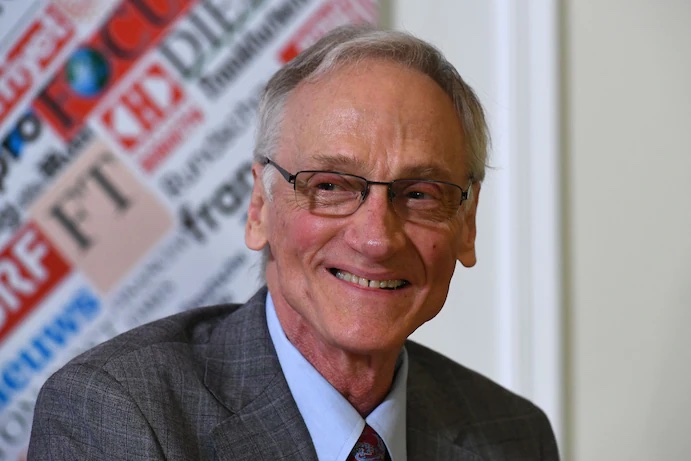
By Matt Schudel
In December 1992, Phil Saviano was at the lowest point of his life. He was 40 years old, out of work and dying of AIDS. Leafing through the Boston Globe, looking for some last-minute Christmas gifts, he saw a small item that contained a familiar name.
He read that a Catholic priest, David A. Holley, had been arrested for abusing boys in the 1970s at a church in New Mexico.
“It was a life-changing moment,” Mr. Saviano later told the British newspaper the Daily Mail. “It was the day all the bells went off for me. I suddenly saw how naive I had been in assuming he had only done this to me.”
Almost three decades earlier, beginning when Mr. Saviano was 11, he had been repeatedly molested by Holley at St. Denis Catholic Church in Douglas, Mass. The abuse went on for a year and a half, until Holley left the parish.
With a strength born of desperation, Mr. Saviano found his voice and told his story to the Globe, becoming one of the first victims of sexual abuse by a priest to go public. In 1995, he reached a financial settlement with the diocese of Worcester, Mass., that amounted to $5,700 after attorney fees. He turned down a larger payout that would have required him to keep silent about his childhood trauma. He believed the only reason he didn’t have to sign a confidentiality agreement was that no one expected him to live.
“If I had not been dying of AIDS, I would not have had the courage to come forward,” Mr. Saviano told the Globe in 2009, “but at that point my career was over, I was on my way out physically, my reputation was shot in the eyes of many people, and I didn’t have a lot to lose. This was a final opportunity to effect some change and address this thing that happened to me when I was a kid.”
Soon afterward, he received a new HIV/AIDS treatment that helped him regain his health. He found a new sense of purpose as an activist and whistleblower and began to research sexual abuse in the Catholic Church. In 1997, he founded a New England chapter of the Survivors Network of Those Abused by Priests (SNAP).
With a background in public relations, Mr. Saviano approached the Globe with his evidence in 1998, but the paper passed on the story. But beginning in 2002, under a new editor, Martin Baron (later the executive editor of The Washington Post), a group of Globe investigative reporters called the Spotlight team published a series of stories detailing predatory behavior by dozens of Boston-area priests, coupled with a concerted effort by top church officials to conceal their misdeeds.
The Globe won the Pulitzer Prize for its articles, which formed the basis of the 2015 film “Spotlight,” in which Mr. Saviano was portrayed by actor Neal Huff, who became a close friend. Mr. Saviano advised writers on the screenplay and was onstage at the Oscars, along with the film’s director, producers and actors, when “Spotlight” won the Academy Award for best picture. (It also won for best original screenplay.) Executive producer and co-writer Josh Singer called him a “true hero.”
Mr. Saviano was 69 when he died Nov. 28 at a brother’s home in Douglas. He had announced on his Facebook page in October that doctors could no longer treat his gallbladder cancer. In the preceding months, he had also had heart surgery and a stroke. The death was confirmed in a statement by his brother Jim Saviano.
After speaking out, Mr. Saviano channeled his harrowing childhood experience into an effort to address wrongdoing in the church. By the time the Globe began its investigation, he had already identified 13 predator priests and hundreds of victims in the Boston area. When he examined church documents, he learned that many of the priests had been transferred to other parishes around the country without being punished. (The number of priests accused of sexual assault in New England eventually grew into the hundreds.)
Initially, as a gay man challenging the authority of the Catholic Church in the early 1990s, Mr. Saviano faced a backlash from church loyalists and even from members of his own family. His father “was angry and accused me of bringing the scandal to our hometown,” Mr. Saviano later said.
During his childhood in Douglas, a small town about 55 miles from Boston, Mr. Saviano enjoyed fishing and hiking. He also delivered newspapers, and one of the stops on his paper route was the rectory of St. Denis Church, where Holley had been newly installed as a priest.
Then in his 40s, Holley was popular with boys in the church, showing them card tricks and making faces behind the backs of nuns teaching Sunday school. When the priest asked Mr. Saviano and another boy to help move boxes of hymnals or do other odd jobs at the church, they felt honored. They received 50 cents apiece.
“He was grooming us,” Mr. Saviano told the Daily Mail in 2015. “The priest figures out ways to get closer to either the child or the parents. That gives him an opportunity to know what is going on in our family and in school. I felt pretty lucky that this guy was taking an interest in me. For us, he was God’s representative on earth, who could perform magic like turning wine into the blood of Christ and forgiving sins.”
Then one day when Holley was doing card tricks, the deck of cards contained pornographic images of people engaged in sex acts. When the 11-year-old Mr. Saviano tried to run away, the priest grabbed his wrist and held him back. Years later, Mr. Saviano could still recall “the coolness of the dark church basement, the smell of his sickly, sweet cologne” and “the sense of being completely trapped.”
Over the next 18 months, Mr. Saviano was repeatedly coerced into performing sexual acts on Holley. The priest once assaulted him behind a door as parishioners walked past, just feet away. Another time, Mr. Saviano saw the priest forcing himself on another boy at the church altar.
“How do you say no to God?” Mr. Saviano’s character says in “Spotlight.”
Mr. Saviano did not speak of his experiences until he was 40. Holley, in the meantime, went on to work at churches in New Mexico, Texas and Colorado before receiving a 275-year sentence in 1993 for the sexual assault of eight boys in New Mexico. He died in prison in 2008.
The Globe’s revelations, made possible in part by Mr. Saviano’s research, shocked people around the world and reverberated throughout the Catholic Church. One of the church’s most powerful figures, Cardinal Bernard F. Law of Boston, admitted that he had reassigned priests accused of child abuse and did little to stop the scourge. He resigned in 2002.
“Finally, victims are being first of all believed,” Mr. Saviano told the Globe that year. “And they’re being respected instead of ridiculed and criticized. Most of all, they’re seeing there is power in joining together and speaking out, and you can have results. Laws are being changed, [attorneys general] have perked up their ears around the country. These are changes that victims, myself included, could only have dreamed of.”
Philip James Saviano was born in Douglas on June 23, 1952. His father was an electrician, and his mother was a homemaker.
Mr. Saviano majored in zoology at the University of Massachusetts at Amherst, from which he graduated in 1975. He settled in Boston and received a master’s degree in communications from Boston University in 1980. He worked in public relations and fundraising for a Boston hospital and later had a concert production company from 1982 to 1991. He also collected and sold Mexican folk art.
His survivors include three brothers.
In addition to forming a New England chapter of SNAP, Mr. Saviano ran the organization’s national website for several years and served on its board of directors. He was also on the board of BishopAccountability.org, which documents sexual abuse in the Catholic Church. He traveled widely to give speeches and counsel other survivors. He appeared at the 2019 Vatican summit on sexual abuse in the Catholic Church.
“Every step they’ve taken,” he said of church leaders, “they’ve done it begrudgingly.”
Mr. Saviano’s experiences with the church caused him to lose all religious faith, and he considered himself an agnostic.
“I find myself envious sometimes of people who do have a strong faith,” he said in 2002. “And I don’t know what that’s like. There are days when I can’t do this on my own.”
Mr. Saviano received a diagnosis of AIDS in 1984, then in 2009 learned that he needed a kidney transplant. When no one in his family was a proper match, he asked for help from the network of survivors of clergy abuse. Several people volunteered, and he ultimately received a kidney from a Minnesota woman who said she had been sexually abused in high school by a former nun.
Among people who had been victimized by priests and church leaders, Mr. Saviano was seen as a valiant, eloquent and courageous champion who refused to be silenced. He also found respect closer to home and, at long last, had a warm reconciliation with his father.
“All those years ago,” his father told him, “you were right. Give them hell.”
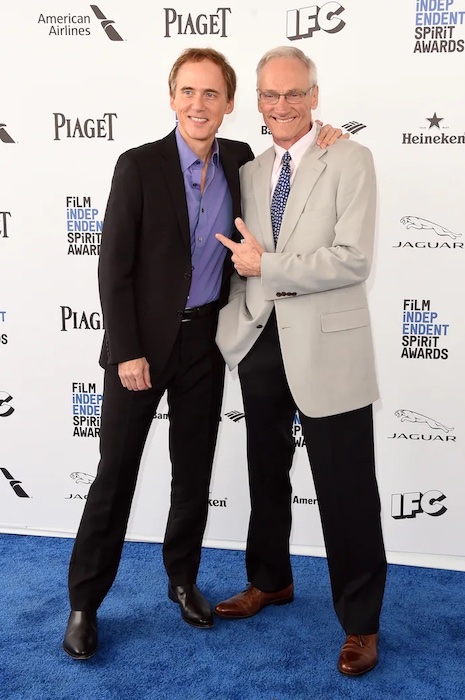
Complete Article ↪HERE↩!
Why the sexual abuse revelations about Catholic clergy in France were grimly unsurprising
The Catholic Church’s defensiveness and culture of secrecy have made it tragically reluctant to admit error and slow to put in place safeguards.

The October revelations concerning sexual abuse by the Roman Catholic clergy in France were cruelly unsurprising. The report, the result of an independent inquiry that began in 2018, exposed how since the 1950s more than 216,000 children had been sexually abused by clergy. There were around 3,000 separate abusers, those who complained about their assault weren’t believed, known abusers were moved rather than charged, and the church hierarchy seemed more intent on denial and obfuscation than protection and justice.
It is a story that we’ve heard from nation after nation, city after city, diocese after diocese. And even the latest papal reaction sounded like devilish déjà vu. Pope Francis said he “felt pain” at what had happened, a banality he’s uttered numerous times as outrages come to light, though sometimes only after public pressure.
At least he acknowledged that the abuse had happened, which is more that can be said about many of his predecessors. Pope John Paul II was especially bad in this regard. It was the Boston sexual abuse scandal reported in 2002 that opened the doors for further investigation, and in that case journalists, activists and survivors had to constantly fight lawyers and bishops in their search for justice. Whatever the Roman Catholic Church might like us to believe, little of its contrition has been voluntary.
In my adopted home of Canada, the Basilian Fathers of Toronto went so far as to appeal a legal settlement awarded to survivors of systemic sexual abuse. Damages worth C$2.57m (£1.5m) were given after the main abuser – William Hodgson Marshall – admitted his numerous crimes over a 38-year career. Rejecting the argument that the payment was too generous, the Ontario Court of Appeal stated: “In rendering the award, the jury was no doubt taking into account the evidence that the Basilians knew Marshall had been abusing boys before he was ever ordained, they allowed Marshall to sexually abuse children for more than three decades as a teacher and religious figure, and they decided to move him to different schools when incidents of abuse were reported instead of preventing further harm.”
Once again, entirely standard, whether it’s Ireland, Canada, the UK, US or pretty much anywhere else the Catholic Church has authority and control. Not, of course, that abuse is confined to one particular religious institution, but it’s the scale and regularity of the Catholic phenomenon that is unique, and the way that even now the Church escapes the sort of condemnation that would surely be applied to a secular institution.
Church leaders may have agreed to put in place long-overdue safeguards and precautions but this is largely window-dressing when the fundamental causes remain so firmly present.
The first of these is enforced celibacy. The Church reveres procreation but has a troubled view of sex. Masturbation, for example, is a sin, and homosexuality an “intrinsically disordered” act “of grave depravity” that is “contrary to natural law”, according to its catechism.
Yet in his 2000 book The Changing Face of the Priesthood, Donald Cozzens estimates that as many as 58 per cent of priests are gay. This is pertinent. Because of the Church’s homophobia, even celibate gay men have to disguise their sexuality, and that cloud of unknowing can shelter not only gay men who are innocent, but also abusive priests who molest children. One of the many tragedies of the ongoing scandal is that Rome, in an attempt to distract from the real problems, has pointed the finger at gay clergy – even though the Church’s own 2011 study by the John Jay College of Criminal Justice confirmed that there was no connection between homosexuality and paedophilia, which is precisely what every other credible investigation has found. Yet as part of the alleged response to the abuse crisis, Pope Francis had made it more difficult for gay men to enter a seminary than it was under any of his more conservative predecessors.
Complete Article ↪HERE↩!
First Nation calls on Catholic Church to apologize for residential schools
— and release records on Kamloops
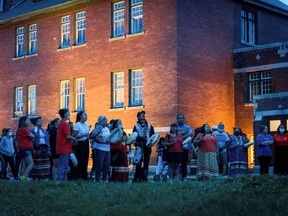
‘What we do want, is an apology, a public apology, not just for us but for the world … holding the Catholic Church to account’
By Tyler Dawson
The chief of the Tk’emlúps te Secwépemc First Nation has called upon the Catholic Church to issue a public apology for residential schools and for the order that ran the residential school in Kamloops, B.C., to release all of its records.
“What we do want, is an apology, a public apology, not just for us but for the world … holding the Catholic Church to account. There has never been an apology from the Roman Catholics,” said Rosanne Casimir, chief of the Tk’emlúps te Secwépemc First Nation, on Friday, just over a week after the preliminary discovery of 215 unmarked graves at the former Kamloops Indian Residential School.
In the days since the announcement, “our nation has been consciously, collectively grappling with the heart-wrenching truth brought to light by the Tk’emlúps te Secwépemc,” Casimir said in her first press conference, held over Zoom, since the discovery was announced.
Casimir said it was too soon to answer technical questions regarding the research itself or the costs and details of the preliminary findings, though reporters were told there would be weekly briefings. Instead, she thanked people for the outpouring of support and mentioned meetings the nation had held with B.C. Premier John Horgan and Carolyn Bennett, the federal Crown-Indigenous relations minister.
This is only the beginning
“This is only the beginning,” Casimir said. “We have a lot of work to do together. While the reality is shocking and we feel some level of anger, it is time to be gentle with ourselves and with each other.”
Casimir also took a moment to clarify a major piece of misinformation circulated by some media. “This is not a mass grave, but rather unmarked burial sites that are, to our knowledge, also undocumented. These are preliminary findings,” she said.
Last Thursday, the Tk’emlúps te Secwépemc First Nation said the use of ground-penetrating radar had revealed “an unthinkable loss that was spoken about but never documented.”
“We had a knowing in our community that we were able to verify. To our knowledge, these missing children are undocumented deaths,” said Casimir said in a news release. “Some were as young as three years old.”
Official records kept by the Department of Indian Affairs, and recorded by the National Centre for Truth and Reconciliation, show that 51 students died at the Kamloops school while it was in operation, from a wide array of causes: drowning, tuberculosis, food poisoning and sleeping sickness.
Overall the Truth and Reconciliation Commission estimated more than 6,000 deaths at residential schools across the country; the last closed in Saskatchewan in 1996. Murray Sinclair, a former senator and the chair of the commission, told CBC Radio that he believes the total could be as high as 25,000 dead, and called for an inquiry into all possible burial sites.“I suspect, quite frankly, that every school had a burial site,” Sinclair said.
The Oblates of Mary Immaculate, a Catholic missionary order, ran the school in Kamloops; it operated as a residential school between 1890 and 1969 before being taken over by the federal government and ran as a residence for nearby day schools until its closure in 1978.

Casimir called on the order to release all of its records regarding the Kamloops school. Father Ken Thorson, with the OMI, said the order has already sent its archives to the Royal British Columbia Museum, but it is looking through other records to see if there is further valuable information.
Casimir noted that there was a “large discrepancy” between the number of dead previously identified through their records and what ground-penetrating radar has found.
“I don’t know if our records will shed further light on this discrepancy, but I’d hope it will, in service to the Tk’emlúps te Secwe̓pemc, in their search for clarity and understanding regarding the discovery in Kamloops last week,” Thorson said in a statement.
In the days since, there has been an outpouring of grief across the country and otherwise stalled or neglected acts of reconciliation, suddenly, became front of agenda.A school board in Calgary immediately moved to change the name of a school affiliated with one of the architects of the residential school program; the Senate created a national holiday in September; and many wore orange to commemorate those who died at the residential school.

Meanwhile, in Kamloops, the work continued.
The researcher, who has not spoken publicly, has continued the work of analyzing the ground-penetrating radar data; the nation says this preliminary work will be done by the end of June.
Ground-penetrating radar is technology used in archaeology, often to explore historic graveyards, that shows differences in soil beneath the surface; it doesn’t map underground, but rather shows changes that can be analyzed further to draw conclusions about what’s been found.
The Royal Canadian Mounted Police and B.C. Coroners Office have been contacted and are involved, though in what capacity remains unclear, both having deferred to the leadership of the First Nation, which noted the historically fraught relationship between police and Indigenous people in Friday’s press conference.
Asked whether the former Kamloops Indian Residential School should be torn down, Casimir said the First Nation believes it should remain standing.
“It is a very huge piece of history that we do not want to be forgotten.”
Complete Article ↪HERE↩!
Survivor calls on Trudeau to release St. Anne’s residential-school abuse documents
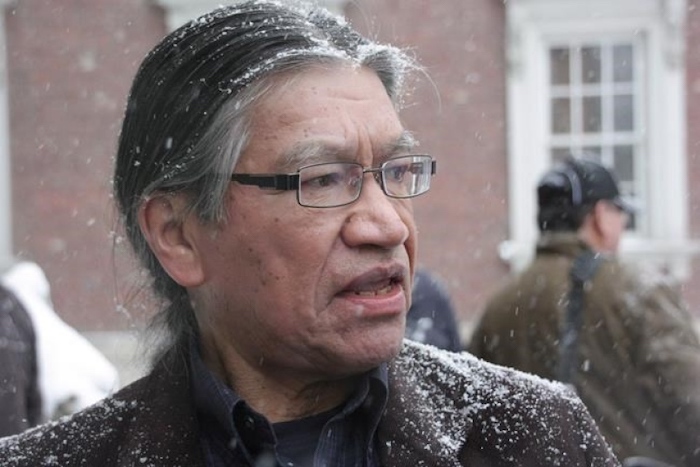
By Maan Alhmidi
Residential school survivor Evelyn Korkmaz is calling on Prime Minister Justin Trudeau to release thousands of documents that detail the sexual and physical abuse of thousands of Indigenous children at St. Anne’s residential school in the last century.
Korkmaz said the federal government has not turned over 12,300 reports from Ontario Provincial Police investigations of violations at St. Anne’s in Fort Albany, Ont. despite an Ontario Superior Court order.
Following the court order in 2014, Ottawa released heavily redacted copies of materials generated by the OPP between 1992 and 1996.
“They’re useless if they’re redacted,” Korkmaz said in an interview with The Canadian Press. “This is part of Canada’s Indigenous history. We can learn from this.”
St. Anne’s Indian Residential School was run by the Catholic orders of the Oblates of Mary Immaculate and the Grey Sisters of the Cross from 1902 until 1976 and was funded by the federal government starting in 1906.
It was one of Canada’s most notorious residential schools. Indigenous children from Fort Albany First Nation in northern Ontario were sexually abused, punished by shocks delivered in electric chairs and forced to eat their own vomit, according to Edmund Metatawabin, a survivor and former chief of the First Nation.
Metatawabin was forced to attend the school between 1956 and 1963. He became a chief of his nation in 1988 and used his position to sponsor a panel for survivors to share their stories, putting together a report that triggered the police investigation in autumn 1992.
“The residential school issue is a very sensitive case for us. It was an embarrassing thing for us to face.” he said in an interview.
“It’s hard to say you were abused as a child. You want to keep that private.”
Metatawabin said more than 900 survivors of St. Anne’s decided to talk about their painful memories and testified to the police in the 1990s, resulting in a trove of information and criminal convictions of six former employees at the school.
In 2006, lawyers for former students and for the churches that ran residential schools, the Assembly of First Nations, other Indigenous organizations and the government approved the Indian Residential School Settlement, which included independent assessment processes to set compensation for claims of sexual or serious physical abuse.
However, many survivors of St. Anne’s have taken the federal government to court, seeking to reopen compensation cases that were settled before the partial release of the police documents in 2014.
A group of 60 survivors launched a case in 2013, claiming that the federal government failed to turn over those documents and breached the settlement agreement.
Ontario Superior Court Justice Paul Perell, who has spent years supervising implementation of the settlement agreement, ruled earlier this year the case should be heard by a judge in British Columbia.
Perell had recused himself over his previous criticism of one of the plaintiffs’ lawyers.
In November, the Ontario Court of Appeal found Perell wrong to order the legal fight to be heard in B.C., saying the case pressed by survivors of St. Anne’s should remain in Ontario. The next hearing is to take place virtually on Dec. 31.
But Justice Brenda Brown of British Columbia Supreme Court issued a court order in May that permits the federal government to destroy the police documents in the new year.
The federal Crown-Indigenous Relations and Northern Affairs Department said in a statement Tuesday the government will retain the police reports until the courts determine the matters before them.
Metatawabin said the documents reveal wrongdoing by the government and the churches. “Instead of making amends, (the government) tried to hide these documents from survivors and from the public.”
The documents have significant value for the Fort Albany First Nation people because they contain elders’ testimonies on their history, Metatawabin said.
“These are sacred words from the elders,” he said. “It’s an insult to the memory of those elders that told their story, that the government took their words from them, and now they want to erase history.”
Korkmaz said these documents are important evidence of the violations committed at St. Anne’s.
“The government for some strange reason is protecting the pedophiles that were at our school,” she said. “A normal citizen of any country, who is caught sexually abusing a child goes to jail. … Why are the priests, the bishops, the cardinals being protected? Why are they allowed to do it?”
Complete Article ↪HERE↩!
